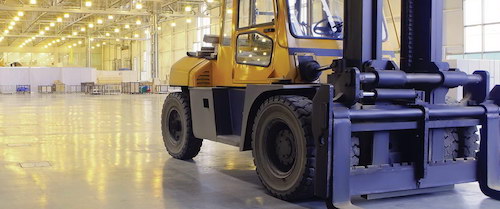
Beton’s Kevin MacDonald wrote an article for the Winter 2019/2020 issue of Development magazine about seamless concrete floors for industrial and warehouse applications.
Concrete slabs on ground usually have joints at regular intervals to control cracking. Concrete shrinks on drying, so at some point it will crack. You can either install joints or let the concrete make its own joints.
Seamless concrete floors
However, in some specialized manufacturing and in warehouses, joints can be hazardous to workers or interfere with operations. They also cause maintenance problems. There are ways to reduce the number of joints for seamless concrete floors.
If you have the expertise, you can write a prescriptive specification. This tells the contractor how to build a seamless floor. If not, it’s better to have a performance specification that spells out the performance requirements but leaves it to the contractor to figure out how to do it.
Either way, there are different approaches to achieving a good result. You can design the concrete to shrink less, use an expansive cement, or posttension the slab. Whichever approach you take, you need to have a proper subgrade to support the slab. Also, both the engineer and the contractor need to know what they’re doing; seamless concrete floors require specialized expertise. For tips on how to specify an industrial floor, click here. For a case study, click here.
As MacDonald states, “Anecdotally, it seems that these installations are either very successful or very problematic. This typically occurs because either the designer or the installer is not aware of the fundamental aspects of the structure’s performance. An important factor in avoiding poor performance is to have both designer and contractor aware of the key performance requirements and how to measure and achieve them.”
